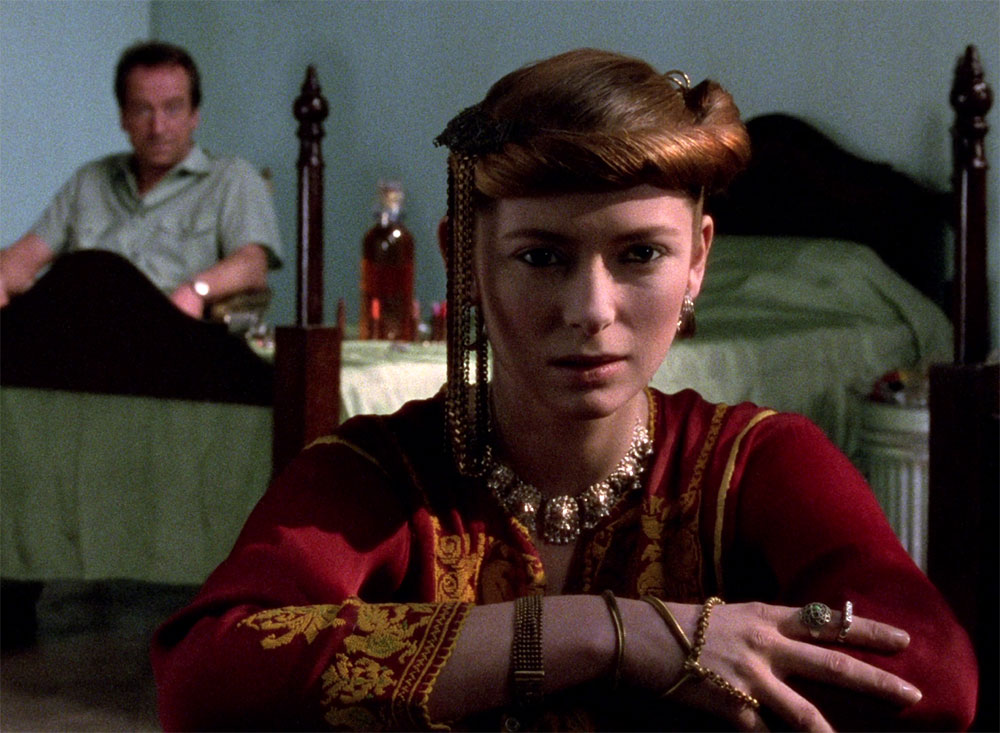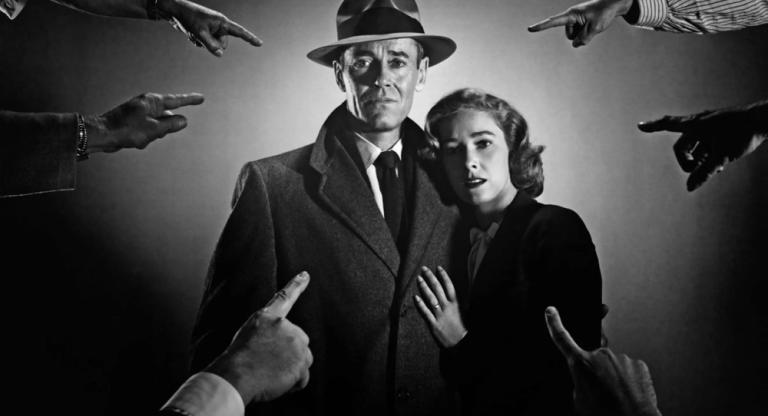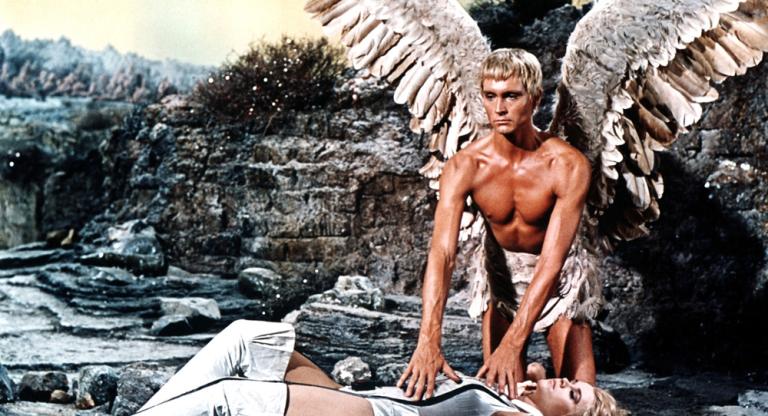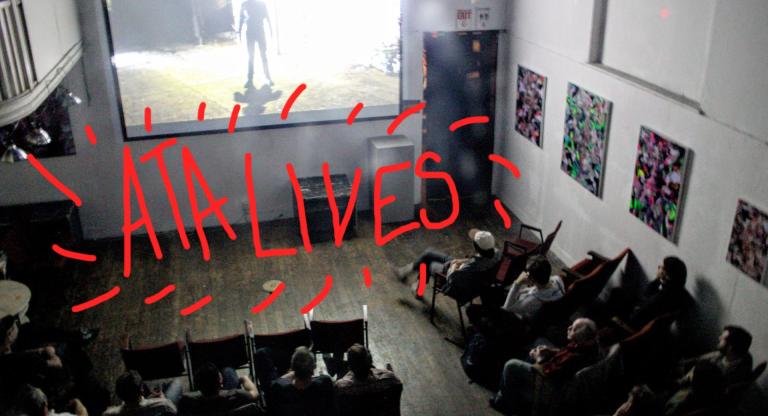Here on earth sacrifice has meaning because every day is a day of the dead.
– Friendship
In Peter Wollen’s Friendship’s Death (1987), a world-weary Scottish war correspondent meets an extraterrestrial robot named Friendship. A peace emissary from the galaxy Procyon, Friendship intended to land at the Massachusetts Institute of Technology. By mechanical accident, she is a captive of the Palestine Liberation Organization in Amman. It is Black September, 1970, and members of the PLO are at war with the Jordanian army, a conflict which will end with the further displacement of thousands to Lebanon.
For most of the film, Sullivan (Bill Patterson) and Friendship (an ethereal Tilda Swinton) talk in a hotel room, their faces shown in close-up (The Man Who Fell to Earth meets My Dinner with Andre, a friend suggested). Sometimes we hear artillery. Their comedic dialogue dwells on the distinction between humans and machines, as Sullivan drinks and flirts with the idea of alien robot pleasure. Palestine comes into focus only through archival footage and photographs that punctuate the narrative, and the few Palestinians we see are nameless guerrillas at the edge of the frame. Sullivan’s sympathy for their struggle has hardened to pity and cynicism. They are “victims of a map,” he tells her. “They should have maps showing the incidents of death. Mortality maps like weather maps.” We might say his idea has been realized by the Israel Defense Forces’ AI maps that render Gaza as a grid of death.
Sometimes Sullivan bangs on his typewriter. His war reportage is flat and useless; what draws people like him to Amman, he suggests, is the excitement of witnessing death. When Friendship caresses the keys, she records her dreams: succulents, the flow of carbon, acid metabolism, hijackers. “I dream of impossible objects.” (I thought of Mohammad Malas’s The Dream, also made in 1987, in which Malas asked Palestinian refugees in Lebanon to recount their dreams). The man-machine binary fades as Friendship’s understanding of her mission sharpens. “If I go to the United States,” she says, “I will be stripped down, cut up, and submitted to every kind of sadistic test.”
After a week on earth Friendship decides to stay in Jordan and fight with the PLO. To Sullivan’s scolding—“This is not your struggle.”—she responds, “I have every reason to identify with the Palestinians.” And as a “simulation” with no memories of her own world, she reassures him, she has far less to lose. At its best moments, the film asks why a person (or robot) should join a struggle that isn’t one’s “own.” Why speak and act in solidarity with others? Why sacrifice comfort, safety, or life? As Friendship’s knowledge of earthlings expands, so does her political consciousness, and she sees the Palestinians’ cause within a global system of extraction and death that will leave no life—biological or artificial—intact. In one of the final scenes, she stands with a rifle (one of her “primitive cousins”) and her voiceover is now in Arabic: “When I am killed, in my pockets you will find travel tickets to peace.” Friendship's death, we assume, is as a martyr.
Wollen, who died in 2019, is best known for his monumental text in structuralist film theory, Signs and Meaning in Cinema (1969). He made Friendship’s Death in 1987 on a studio set in London, far from Amman where, that September, the Arab Summit sidelined the Palestinians’ struggle against Israeli occupation. Two months later, the First Intifada emerged in the Jabaliya refugee camp as a popular uprising comprising armed resistance, boycotts, tax strikes, and mass civil disobedience.
At a vigil on Friday for the late poet and professor Dr. Refaat Alareer in Washington Square Park, after he was killed on Thursday in an apparently targeted Israeli air strike, the crowd dispersed Expo markers in tribute to Alareer’s declaration that if Israeli soldiers came to his door, he would throw the only thing he had: an Expo. Spread among roses and candles, the colorful markers reminded me of Friendship’s cherished earthling objects (nail polish, wind-up toys, a razor), odd comrades in her intergalactic solidarity project, and the mysterious red capsule she gifts to Sullivan. Years later, he realizes it contains what may be Friendship’s dreams, rendered as an abstract, structuralist film within the film.
Friendship’s Death screens tonight, December 10, at Light Industry, introduced by Audrey Wollen. All proceeds will go to Palestine Legal.



